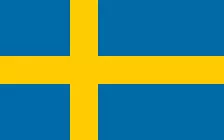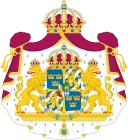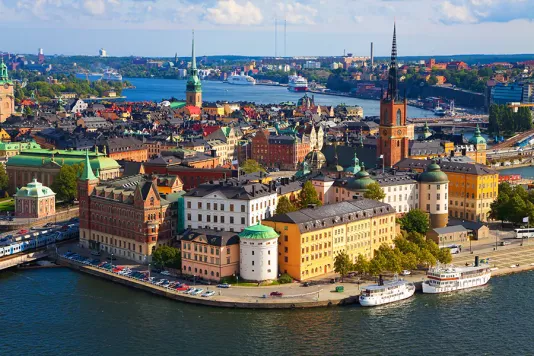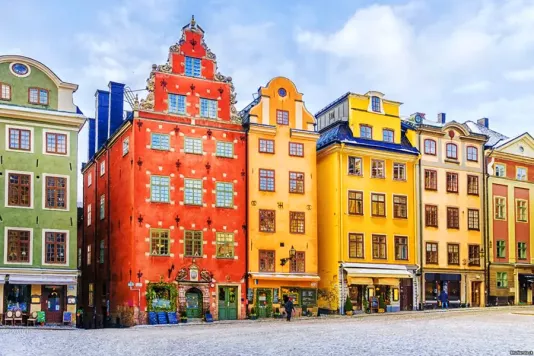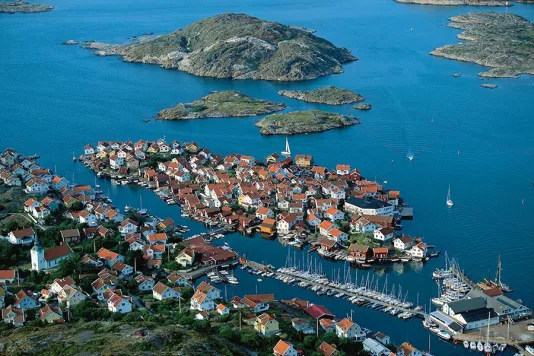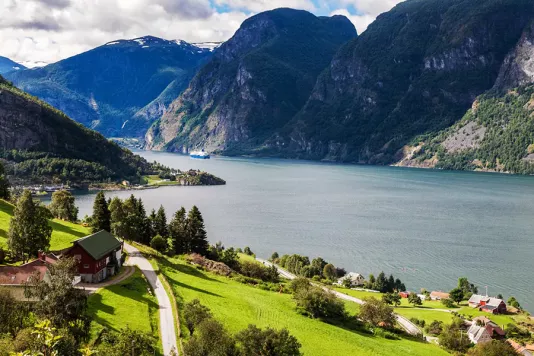Sweden
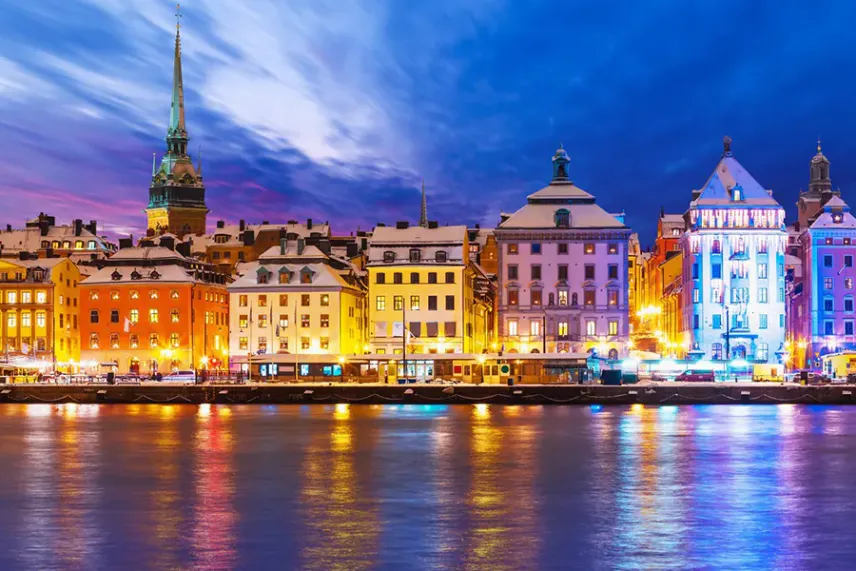
Geographic Location of Sweden
The Swedish landscape is similar to the Norwegian one with highlands and some mountainous areas in the north. The country is dominated by coniferous trees, except in the south where deciduous trees predominate. The middle part of the country has fertile areas towards the coast, where the factories and industry of the country are located. In the south, which is the most densely populated area, agriculture is practiced. Cultivated land makes up only about seven percent of the actual land area. Sweden has a long east-southwest coast, and the large islands of Öland and Gotland belong to Sweden.
The climate varies in different parts of the country. In the north, winters are cold and snowy, while summers can be warm. In the southern part of Sweden, the climate is milder all year round. The warm Gulf Stream in the Atlantic provides a warmer climate in Sweden than anywhere else so far north of the globe.
Brief History of Sweden
Sweden was central to the Viking Age, which lasted from the end of the 8th century to the middle of the 11th century. The Vikings from Scandinavia plundered and ravaged Europe. A single kingdom with a common king has existed in southern Sweden since the 12th century. Since 1397, the country was part of the Kalmar Union and had a common king with Denmark and Norway. Sweden became independent in 1523.
In the following centuries, Sweden conquered the lands around Östersjön and became a great power. In step with the conquests, Sweden steadily acquired more and more enemies. The largest of them was Russia, and in 1709 Sweden ceded to her its central position in the Baltic Sea region. From 1814 to 1905 Norway and Sweden were in an alliance. Sweden received Norway as a reward for siding with Napoleon during the Napoleonic Wars and as a reward for the Russians losing Finland.
Sweden remained neutral during both world wars. Since Sweden did not participate in World War II, after the end of the war, it had a great advantage over other European countries. Swedish industry was unaffected and the economy grew rapidly when peace came. Under the Social Democratic Party, which ruled from 1945 to 1976, a vast welfare state was built in the country. In 1995 Sweden became a member of the EU.
Society and Politics in Sweden
Sweden is a constitutional monarchy, with the King of Sweden only having a ceremonial role. The real political power is vested in the Parliament, called the Riksdag. They make the country's laws and make budgets, and the prime minister and her government are the executive branch. Because Sweden has a parliamentary system, the government needs the support of a majority in parliament to carry out policy.
The Social Democrats dominated politics for much of the 20th century. In recent years, five parties have played a central role in politics. The five parties are divided into two blocs: socialist and bourgeois. State power alternates between blocs. Another development was the emergence of the Swedish Democrats, a far-right party critical of immigration. In 2014, the party became the third largest in the Riksdag. This created instability in politics because no party wanted to cooperate with them. Today, the party has received even more support and is likely to gain more power as an ally of the new government after elections in 2022.
In September 2022, new elections to the Riksdag were held, where the Social Democrats emerged as the largest party. After a delicate and exciting election, the right wing finally won a one-mandate majority. This means that the conservative Moderates will form a new government. They need the support of the Swedish Democrats to get a majority in the Riksdag. One of the most important issues in this election campaign was the increase in crime in Sweden. This gave an advantage to the right, since gang crime increased significantly under the left government.
In foreign policy, Sweden has traditionally pursued a policy of neutrality without alliances. The country is still officially neutral, but joined the EU after the end of the Cold War and strongly supports Western powers. International work within the UN has always been important to Sweden and they are one of the largest financial donors to the UN.
Although Sweden's foreign policy emphasizes neutrality without military alliances, Russia's war in Ukraine has forced it to rethink its position. In May 2022, they applied for NATO membership along with Finland. Membership agreements must be ratified by all Allied countries, and Sweden and Finland must sign the Atlantic Pact, which acts as NATO's legislative body.
Economy and Trade of Sweden
Sweden has an open economy and you depend on being able to sell your products on the international market. Timber, minerals and hydropower have made Sweden the leading industrial country in Scandinavia. In addition, they export electronics and telecommunications equipment. The service sector is the largest part of the economy.
Sweden was hit hard by the financial crisis in 2008, but bailout packages and public investment meant that as early as 2010 the economy saw strong growth. Since then, economic growth has been weak, but it is still higher than in other Western countries. In addition, the country is experiencing an increase in youth unemployment.
The EU is Sweden's most important trading partner; especially in other Nordic countries and Germany. Trade with Asia and the US has also grown in recent years, but still accounts for a small share of total foreign trade.
Swedish Cuisine and Culinary Traditions in Sweden
Swedish cuisine in many ways personifies Sweden as a country. Swedish cuisine is predominantly simple and hearty country cuisine, with a culinary tradition that is rooted in Sweden's distant past. The geographical position of Sweden has determined the widespread use of sea fish and other seafood in the recipes of Swedish dishes - Sweden is famous for its fish dishes, such as pickled herring or fermented herring. Potatoes take pride of place in the recipes of Swedish cuisine https://kashevar.com/en/recipes/sweden, in addition, the Swedes are very fond of meatballs, which are invariably served with sweet and sour lingonberry sauce. Sweden is also rich in baking recipes, and the numerous types of Swedish crispbread are hard to list. From non-alcoholic drinks, the Swedes prefer coffee, and as alcohol they prefer to drink avkvavit, vodka and, of course, various types of beer.
